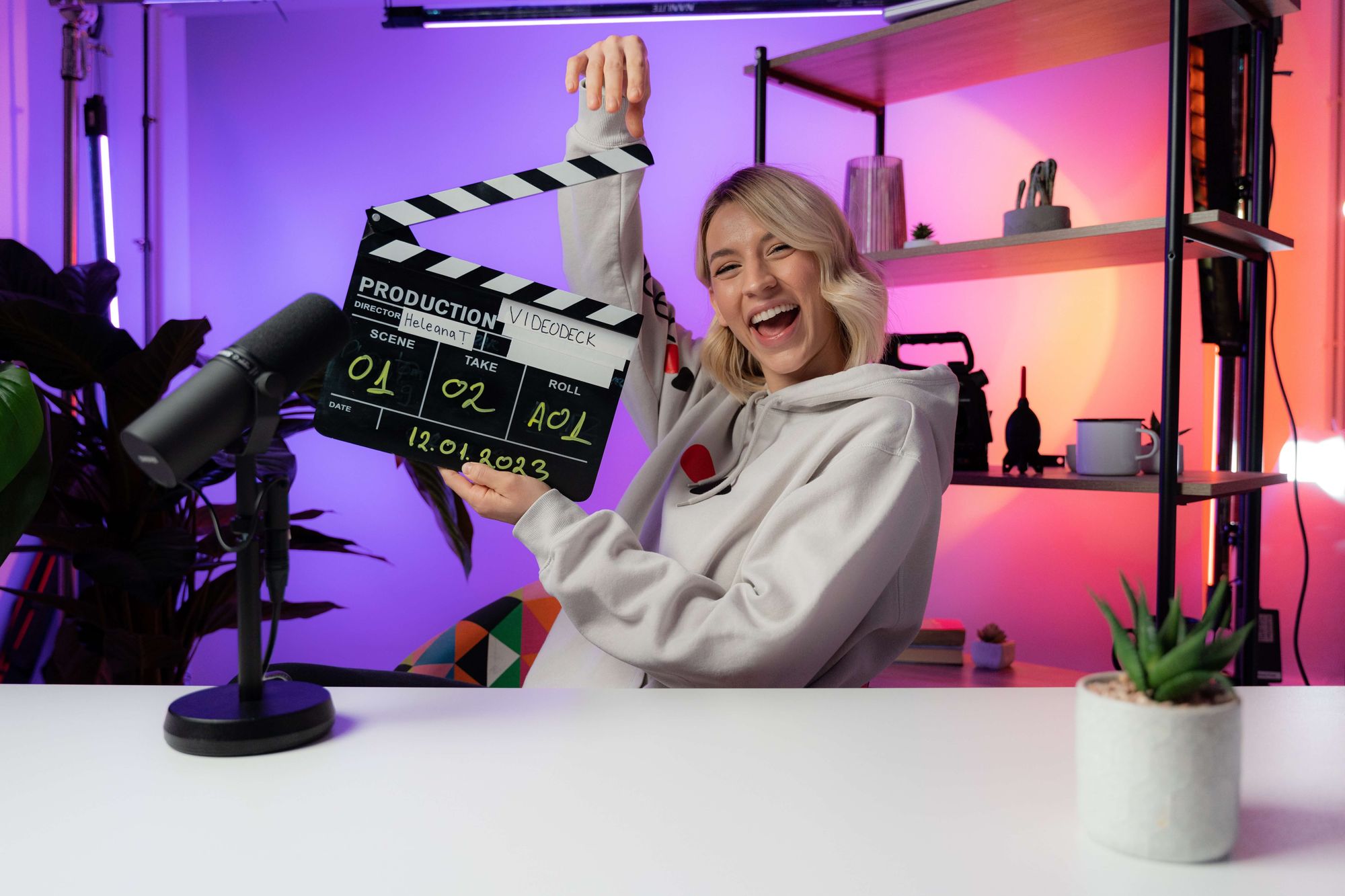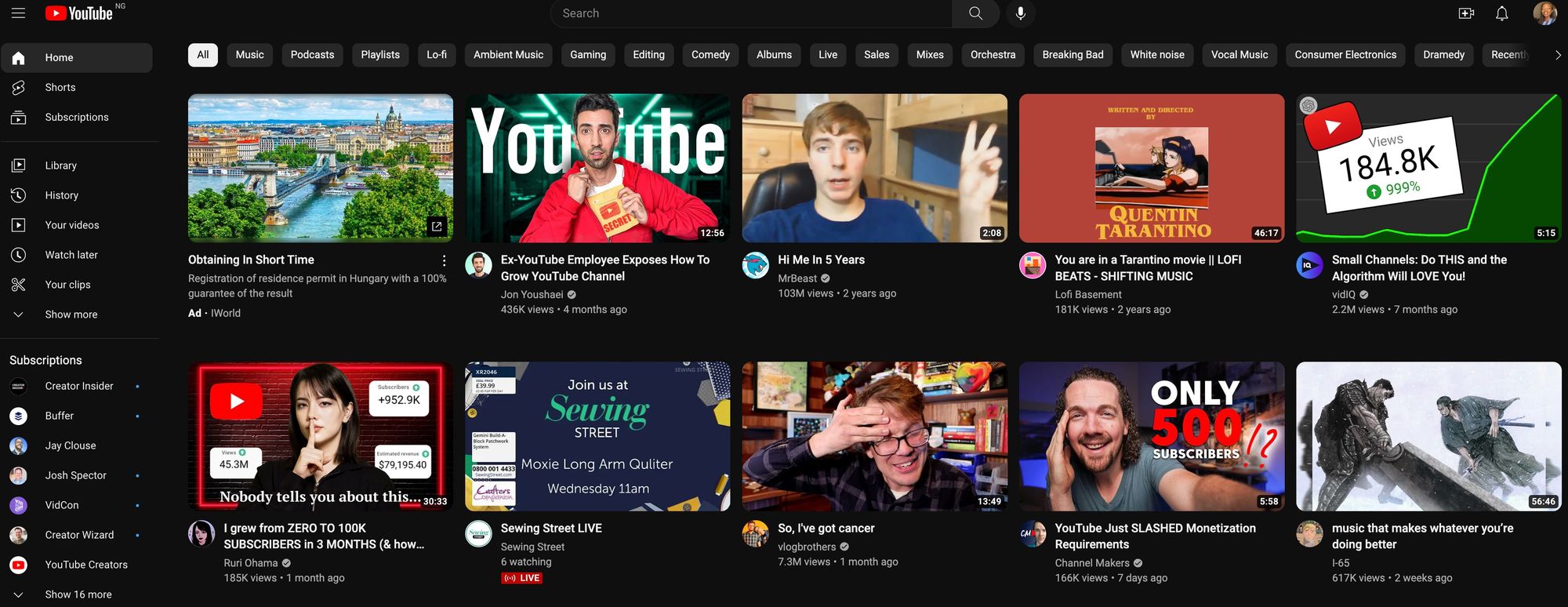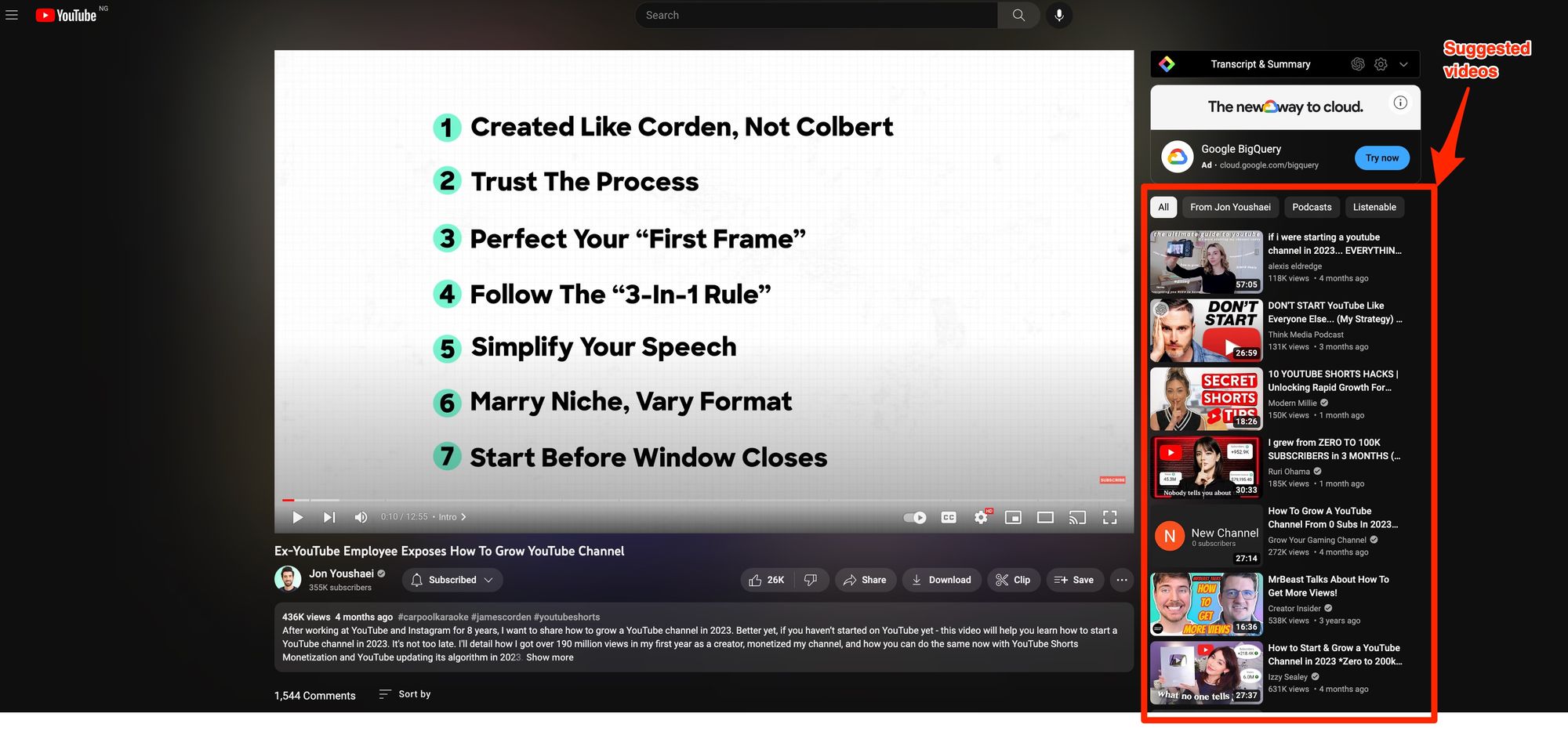

Close


YouTube is a staple in the global cultural landscape – parents use it to keep their kids occupied, students use it to learn, and millions use it for entertainment, information, and everything in between. But one thing that is often a mystery is discovery – how do people get the content they do? Why does certain content go viral seemingly overnight?
The platform is essentially a massive search engine, but more often than not, its users are watching YouTube’s recommendations and not much else. The more people watch something, the more it seems to be recommended until it goes viral.
In this article, we’ll break down the YouTube algorithm according to YouTube insiders, and share tips for applying this knowledge to your videos.
Before we dive into the important lessons for creators about navigating YouTube’s algorithm, you’ll want to understand the signals that determine how content is ranked on the platform. Although this isn’t an exhaustive list, the three main things to keep in mind when creating content are:

Much like Instagram, different parts of YouTube have different algorithms, the two main ones being your Homepage and your Suggested videos.


YouTube understandably wants to keep its viewers watching for as long as possible. If people click in and out of your video as soon as possible, they won’t recommend your content. They also check in with viewers using frequent surveys to gauge better what feelings the content that is recommended inspires.
As part of their efforts to support creators, YouTube’s Creator Liasion Rene Ritchie sat down with Director of Growth and Discovery, Todd Beaupré, to give a background look at how their team thinks about and treats the YouTube algorithm in 2023. Here are the main lessons for creators.
The first thing Todd highlights in the conversation is that creators who want to game the algorithm are going about it the wrong way. “The way we design the algorithm is such that we want to give the audience the content they’ll be most satisfied by.”
He goes on to mention that things like the best time to post or which keywords to use don’t matter much to the algorithm because they don’t matter to the audience.
So instead of optimising your content for the algorithm, the key is getting to know your audience and creating for them. However, don’t forget to create what you want as well by finding the intersection between what you want to create and what they want to see.
I spoke with YouTuber Aprilynne Alter about her experience on the platform and she mentioned that part of the reason she struggled with her first niche was because of the lack of that intersection. Her audience loved her content, but she didn’t love creating it, ultimately leading to burnout.
Of course, this doesn’t mean you shouldn’t take advantage of the tools at your disposal. Part of growth is understanding how to deliver content your audience will be most satisfied with. The rules are the rules for a reason.
Think about it this way: if you worked hard on an informational video that isn’t discoverable because you didn’t use the right title or the thumbnail doesn’t tell people what the video is about, it likely won’t reach who it’s meant for. A video that has both great content and pulls out the stops to get their videos in front of the right people will perform better in most cases.
The best way to strike this balance is to follow Todd’s advice and replace “algorithm” with “audience” when asking questions about how to create better-performing content. Instead of “How can I make sure the algorithm finds this video?” ask, “How can I make sure my audience finds this video?”
Replace “algorithm” with “audience” when asking questions about how to create better-performing content. Instead of “How can I make sure the algorithm finds this video?” ask, “How can I make sure my audience finds this video?”
Watch time is a major metric with YouTube’s algorithm. The idea behind prioritizing this metric is that if someone spends a significant amount of time on a video, it’s a good video. Of course, not all watch times are created equal – time spent on a YouTube Short is not the same as time spent on an hour-long video.
However, watch time alone isn’t an indicator of “satisfaction” – there might be more value packed into a five-minute video than in a video thrice as long.
So to understand what that value is and represent it in algorithmic recommendations, YouTube looks for opportunities to ask viewers about their experience periodically. You may have seen this before in the surveys displayed under a video which give you options asking if it was useful, relaxing, or entertaining, among others.
The survey results and other signals from the video like engagement rate, comments, etc., are fed into their recommendation system. The team has found that viewers are ultimately more satisfied with the mix of videos from the recommendations plus the creators they already follow.
Congratulations, you had a video go viral – now what? What happens after the curtains close and you have this new audience from your viral video?
Virality is one thing that can be affected by a number of factors, not least luck. But long-term value – or cumulative value over time for your audience – is harder to build and doesn’t translate to a long career. Some creators hit the ground running and only build momentum over time (like Emma Chamberlain). Others have to build slowly over time and often never see audience growth in the millions. However, both can be classified as successful because of the value of their audience. A YouTuber with a million followers who can’t get them to take action might as well have zero followers.
Instead of thinking about how you can get your video to get a given number of views, prioritize making a lasting impression on your audience. Incorporate elements that make them want to keep coming back and build up a relationship with them.
A way to do this, as gathered from Todd and Rene’s conversation, is to “think like a viewer”. Take off your creator hat, and look at the content you like as well as the content in your niche through the lens of an audience member. Take note of the things that kept you engaged with a video. Was it the editing? Or the storytelling? Did the creator have an especially charming personality?
Take off your creator hat, and look at the content you like as well as the content in your niche through the lens of an audience member. Take note of the things that kept you engaged with a video. Was it the editing? Or the storytelling? Did the creator have an especially charming personality?
Once you understand how an audience member might view a video, take the lessons to your own content and figure out what fits where. Maybe you need to learn how to implement sharper edits, use bigger text on the screen or do more live examples for your educational videos. Chances are, you’ll discover something you can incorporate into future content.
With all the opportunities for multi-format content creation today – long-form, Live, Shorts, podcasts, and even multi-language content – it might feel like you’re juggling way too much.
In addition, if you’re producing content that appeals to different audiences or in different formats, you may be considering if it makes sense to have it all on one channel or if it would be better to separate it into different channels.
The answer comes down to two things: you and your audience. If a channel makes sense and you feel supported enough to take on something new, by all means, go for it. But don’t burn yourself going multi-format out in the hopes that it’ll accelerate your growth.
Remember, YouTube (and its algorithm) prioritize the audience. So if you take on a new channel but your content quality drops because it’s not right for you, or your audience just doesn’t like it, you may find yourself with a new set of problems.
The recommendations are simple:
Finally, Todd shares that the algorithm is always looking to recommend your content to people who view it in one format on another format (they watch your Shorts → they’re recommended your longer videos). Consider a strategy to create multi-format content eventually, so there’s something to suggest in a discovery feed.
We know that YouTube’s algorithms prioritize viewer satisfaction, and we know what metrics and features they use to measure that. Here are some tips to help you put this knowledge into practice.
In other words, pick a niche. Although the topic, industry, or niche you want to pursue might be saturated, Jay Acunzo shares some advice for thinking about the uniqueness of your content. He uses the XY premise, which is a sentence that defines what sets your content apart from similar creators. Some examples of the XY premise include:
Adapt the Premise template for your content: “This is a [Project type] about [Topic]. Unlike other [Project types] about [Topic], only we [Unique Proposition].” Once you’ve figured out yours, you can focus on developing content that suits your premise.
After spending some time on the platform, most users know what they want from a jaunt through their YouTube Homepage. They might not be looking for new content, instead sticking with the familiar. But, they may try out a new recommendation – if it shows up for them and catches their attention. How can you best capture this attention?
Well, the conventional advice is the convention for a reason – to a certain degree, it’s the best path to steady growth that most creators can control. Here are some features that you can always count on to help with your growth:
One of the things that will always stop me from scrolling is eye-catching visuals. Your video thumbnail is the first impression a new viewer will get of your video – if it’s not appealing, they won’t click through.
Your thumbnails don’t have to be elaborate – Canva has a lot of great, simple templates you can use if you don’t have the design experience. Some tips to use in your thumbnails include:
[Screenshot/example]
Your thumbnail shows up first before the title, so it’s great real estate to get as much information across to YouTube users before they scroll past.
If you use YouTube a lot (you’re just like me!), you may have noticed that your Recommended tab often features new videos from small creators. This is entirely on purpose––there’s even a whole team dedicated to it.
Todd explains that this team has folks dedicated to trying different approaches to promote small creators to their target audience and tracking how many of them are succeeding, as this is a priority for YouTube.
So if you’ve been worried about your prospects with starting a new YouTube channel in 2023, lay some of those worries to rest. However slowly or quickly you grow, YouTube is a great platform to start.

